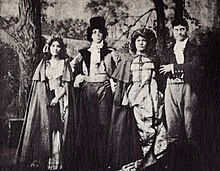
The House of Tudor was an English dynasty that held the throne of England from 1485 to 1603. They descended from the Tudors of Penmynydd, a Welsh noble family, and Catherine of Valois. The Tudor monarchs ruled the Kingdom of England and the Lordship of Ireland for 118 years with five monarchs: Henry VII, Henry VIII, Edward VI, Mary I and Elizabeth I. The Tudors succeeded the House of Plantagenet as rulers of the Kingdom of England, and were succeeded by the House of Stuart. The first Tudor monarch, Henry VII, descended through his mother from the House of Beaufort, a legitimised branch of the English royal House of Lancaster, a cadet house of the Plantagenets. The Tudor family rose to power and started the Tudor period in the wake of the Wars of the Roses (1455–1487), which left the main House of Lancaster extinct in the male line.
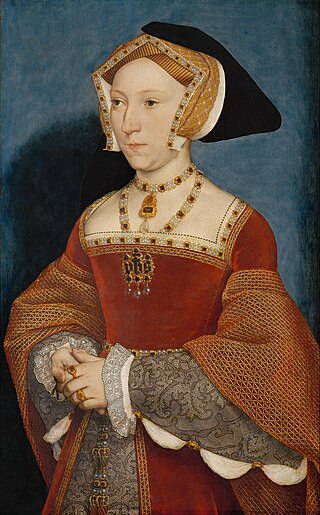
Jane Seymour was Queen of England as the third wife of King Henry VIII from their marriage on 30 May 1536 until her death the next year. She became queen following the execution of Henry's second wife, Anne Boleyn, who was accused by King Henry VIII of adultery after failing to produce the male heir he so desperately desired. Jane, however, died of postnatal complications less than two weeks after the birth of her only child, the future King Edward VI. She was the only wife of Henry to receive a queen's funeral; and he was later buried alongside her remains in St George's Chapel, Windsor Castle.

Mary Tudor was an English princess who was briefly Queen of France as the third wife of King Louis XII. Louis was more than 30 years her senior. Mary was the fifth child of Henry VII of England and Elizabeth of York, and the youngest to survive infancy.

Marion Davies was an American actress, producer, screenwriter, and philanthropist. Educated in a religious convent, Davies fled the school to pursue a career as a chorus girl. As a teenager, she appeared in several Broadway musicals and one film, Runaway Romany (1917). She soon became a featured performer in the Ziegfeld Follies.

Charles Brandon, 1st Duke of Suffolk was an English military leader and courtier. Through his third wife, Mary Tudor, he was brother-in-law to King Henry VIII.

The Sword and the Rose is a family/adventure film produced by Perce Pearce and Walt Disney and directed by Ken Annakin. The film features the story of Mary Tudor, a younger sister of Henry VIII of England.

The Other Boleyn Girl (2001) is a historical novel written by British author Philippa Gregory, loosely based on the life of 16th-century aristocrat Mary Boleyn of whom little is known. Inspired by Mary's life story, Gregory depicts the annulment of one of the most significant royal marriages in English history and conveys the urgency of the need for a male heir to the throne. Much of the history is highly distorted in her account.

Frederick Tyrone Edmond Power Sr. was an English-born American stage and screen actor, known professionally as Tyrone Power. He is now usually referred to as Tyrone Power Sr. to differentiate him from his son, actor Tyrone Power. He was thrice widowed.

Julia Marlowe was an English-born American actress, known for her interpretations of William Shakespeare's plays.
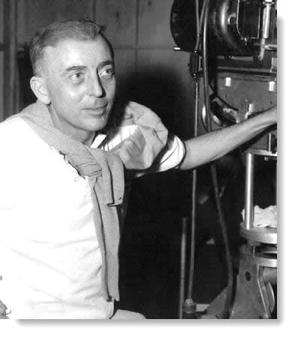
Charles Davies Lederer was an American screenwriter and film director. He was born into a theatrical family in New York, and after his parents divorced, was raised in California by his aunt, Marion Davies, actress and mistress to newspaper publisher William Randolph Hearst. A child prodigy, he entered the University of California, Berkeley at age 13, but dropped out after a few years to work as a journalist with Hearst's newspapers.
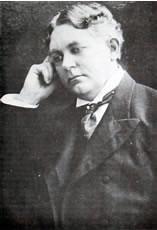
Charles Major was an American lawyer and novelist.

Henry VIII and his reign have frequently been depicted in art, film, literature, music, opera, plays, and television.

Mary I of England has been depicted in popular culture a number of times.

Mary Boleyn, also known as Lady Mary, was the elder sister of English queen consort Anne Boleyn, whose family enjoyed considerable influence during the reign of King Henry VIII.

Lights of Old Broadway is a 1925 American silent drama film directed by Monta Bell, produced by William Randolph Hearst's Cosmopolitan Productions, and released by Metro-Goldwyn-Mayer. The film stars Marion Davies in a dual role and Conrad Nagel, and is an adaptation of the play The Merry Wives of Gotham by Laurence Eyre (USA). The film has color sequences using tinting, Technicolor, and the Handschiegl color process.
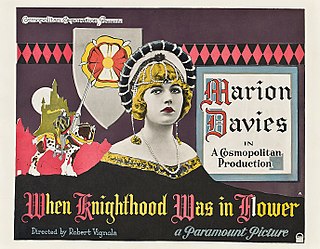
When Knighthood Was in Flower is a 1922 American silent historical film directed by Robert G. Vignola, based on the novel by Charles Major and play by Paul Kester. The film was produced by William Randolph Hearst for Marion Davies and distributed by Paramount Pictures. This was William Powell's second film. The story was re-filmed by Walt Disney in 1953 as The Sword and the Rose, directed by Ken Annakin.
When Knights Were Bold is a comedy play by the British writer Harriett Jay writing under the pseudonym of Charles Marlowe which was first performed in 1906. A British officer Guy De Vere returns home from service in India after inheriting an estate and a baronetcy in the village of Little Twittering where he encounters a number of eccentrics. His cousin Rowena, meanwhile, falls madly in love with him. It should not be confused with the 1898 novel When Knighthood Was in Flower by Charles Major which is sometimes known by this title.
Yolanda is a 1924 American silent historical drama film produced by William Randolph Hearst and starring Marion Davies. Robert G. Vignola directed as he had Enchantment (1921) and several other Davies costume films. The film began production as a Metro-Goldwyn film, with the company becoming Metro-Goldwyn-Mayer in May 1924.

Roselle Knott, was a Canadian actress.
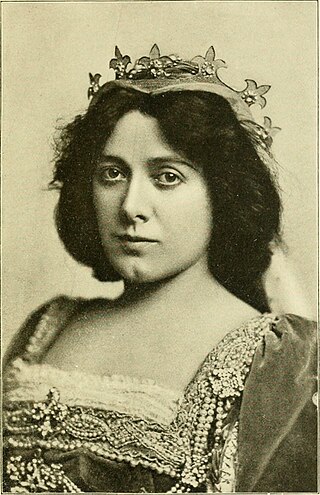
When Knighthood Was in Flower is a play in four acts by Paul Kester. It is based on the 1898 novel of the same name by Charles Major. The work premiered on Broadway at the Criterion Theatre on January 14, 1901. It ran for a total of 176 performances; closing in June 1901. The original production was produced by Charles Frohman and used sets by Ernest Albert, Frank E. Gates and Edward A. Morange. The costumes were designed by Mrs. Charles Hone and Harper Pennington. The cast was led by Bruce McRae as Charles Brandon and Julia Marlowe as Mary Tudor among others.

